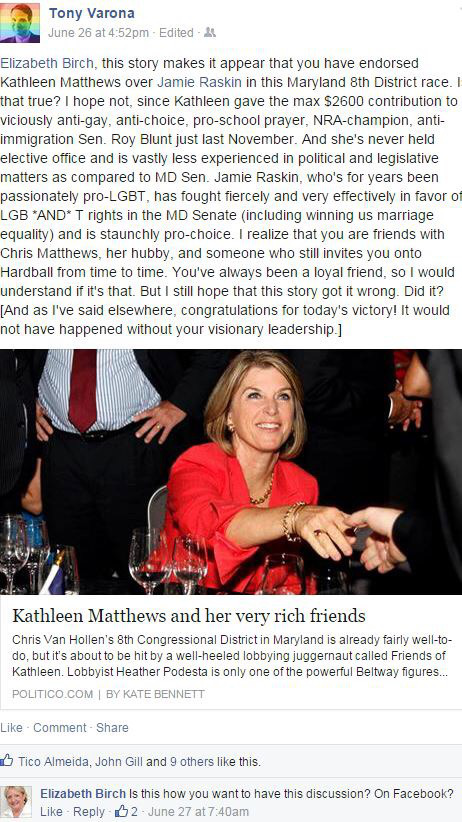As we head into the holidays, there’s going to be a wasteland period with little if any news to report. MD candidates are scrambling (product placement alert!) to finish Q4 fundraising with a flourish, but that’s about it. And we not have anything to talk about in terms of new numbers until January 15, although the whispering has already begun.
So to fill the space and hopefully provide some entertainment and information, I’m going to put it out to you, dear readers.
Here’s a series of questions: if you have a campaign to run, who do you want to manage it? How about field? Which consultants are you hoping to engage? Which local activists do you want on your team?
Similarly, you’ve got a bill you want to pass in Annapolis or the counties: which lobbyist/activist/lawyer would you want to run your advocacy?
I want nominations. Totally anonymous, even better if you give me reasons why. I may use the narrative answers in a post, but again, they’re anonymous.
Categories:
1. Campaigns. A. Staff B. Activists C. Consultants
2. Policy. A. Lobbyists B. Activists C. Lawyers
Once I have nominations, I will create a poll that will allow the Maryland Scramble readership to vote in utterly unscientific fashion, so some folks can brag and others can curse the unfair voting system. Self-nominations are permitted, and I may throw a few in myself if they don’t show up in your submissions.
Before Christmas, we’re going to answer the question “who ya gonna call?” to see who are the biggest, baddest and most effective politicos in all the land - or at least Maryland.
I even created a new email - [email protected] - just for this little exercise. You can use it to cents for me for other blog-related communications, or you can use the site’s sidebar for non-public comments as well.
The floor is open. Whatcha got for me?
